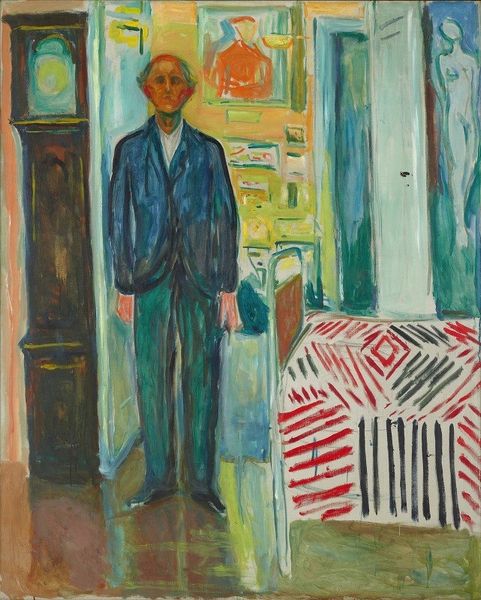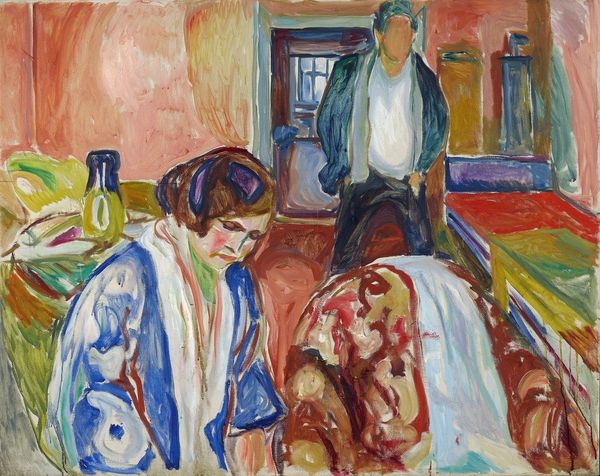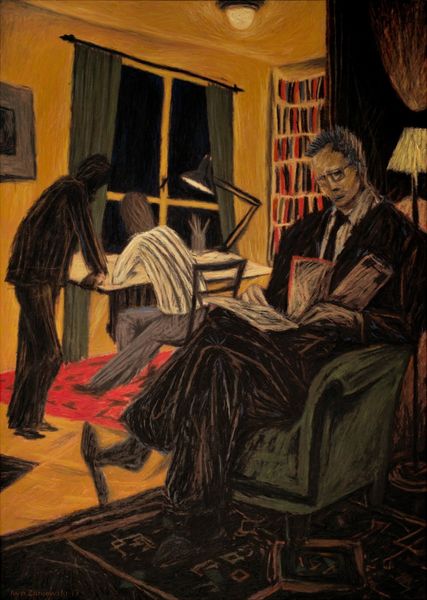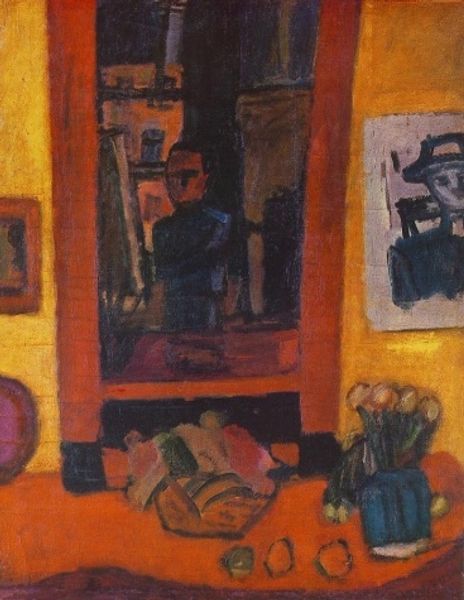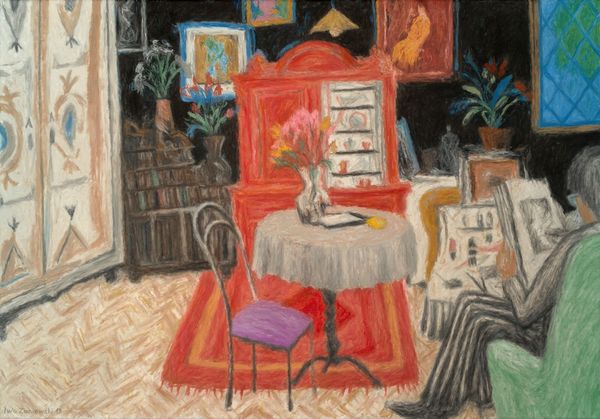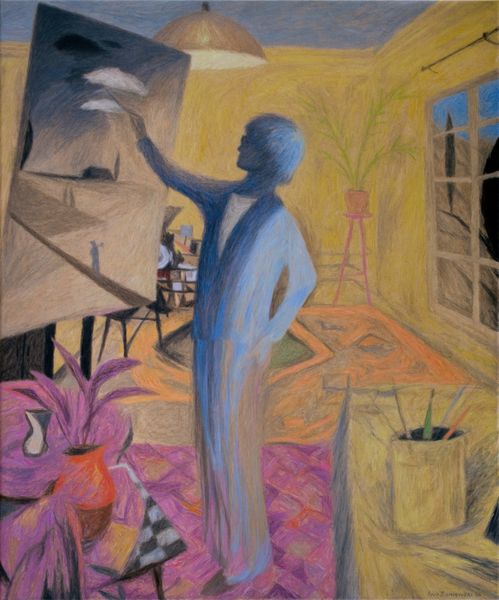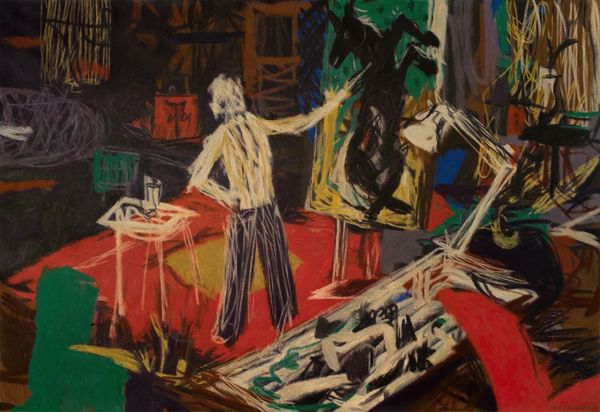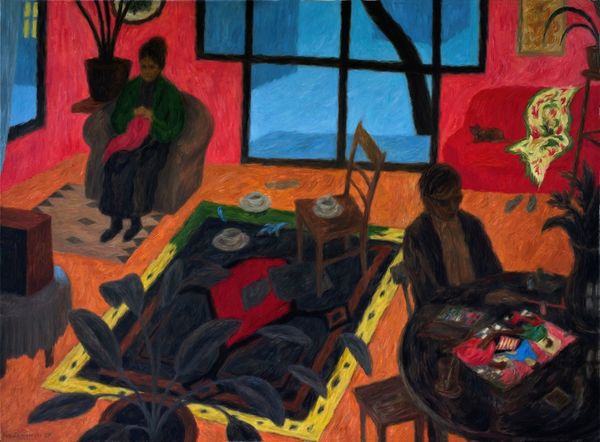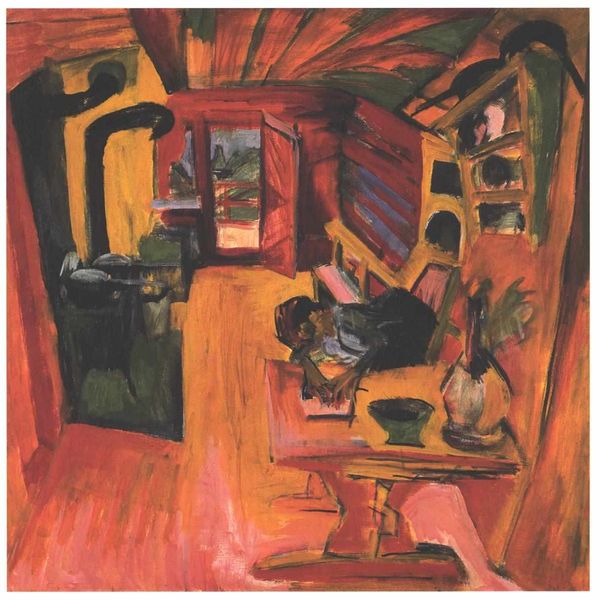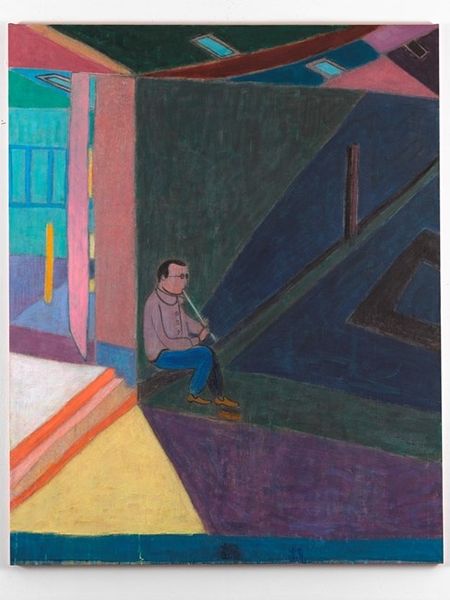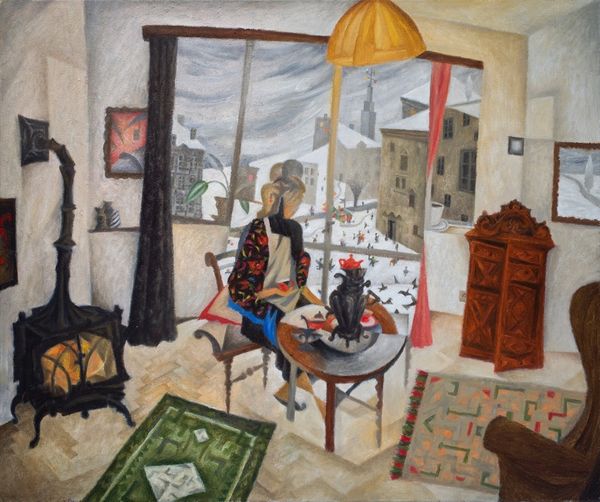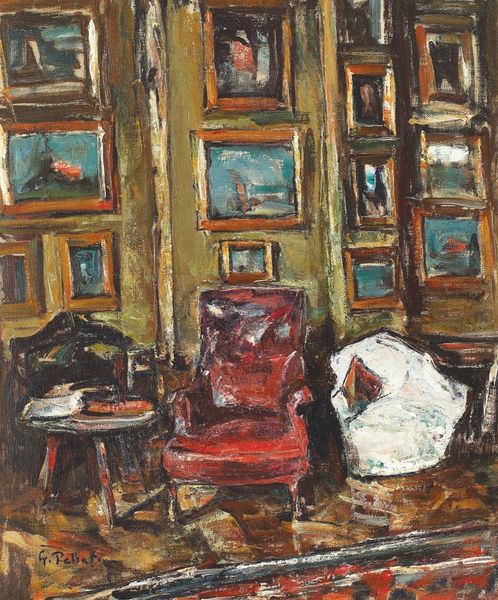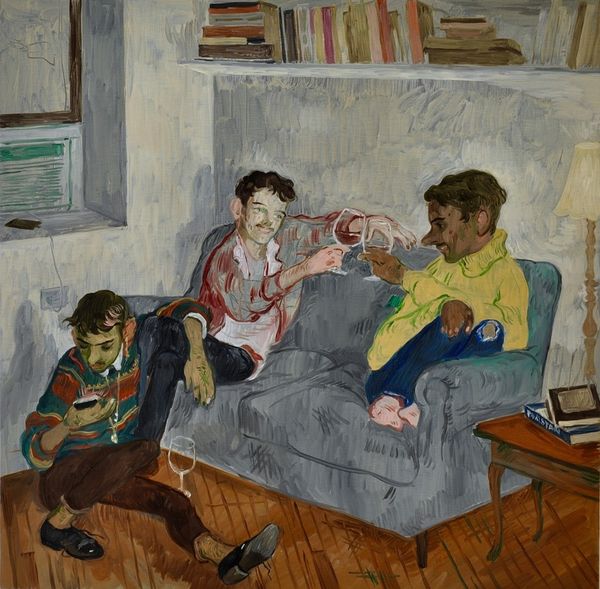
painting, oil-paint
#
figurative
#
abstract expressionism
#
painting
#
canvas painting
#
oil-paint
#
landscape
#
pop art
#
german-expressionism
#
figuration
#
neo expressionist
#
expressionism
#
genre-painting
#
portrait art
#
expressionist
Copyright: Public Domain: Artvee
Editor: Here we have Ernst Ludwig Kirchner's "The Visit – Couple and Newcomer," painted in 1922 using oil on canvas. The colours are really striking – bright yellows and reds contrasted with blues and greens. It creates a somewhat unsettling feeling to me, and the composition is very compressed, almost claustrophobic. What strikes you about this piece? Curator: It’s the material reality that jumps out. Look at how Kirchner has used oil paint, so thickly applied in certain areas, particularly in those vibrant background hues, that the surface itself becomes a key component of the work. This physicality clashes interestingly with the flattened perspective. How do you think that impacts our understanding of the subjects depicted? Editor: Well, it’s as if the artist wanted us to be hyper-aware of the canvas, the act of painting, rather than get lost in some illusion of depth. It makes the scene feel artificial, almost like a stage set. The brushstrokes look pretty fast too, how would the speed impact the feel? Curator: Exactly. The apparent speed speaks to the artist’s process. In a post-war context, Kirchner’s return to figurative work—produced rapidly—suggests a grappling with a new, fractured reality. Consider, too, the economic conditions. The cost of materials likely influenced his decisions. The readily available, perhaps cheaper, bright pigments could suggest a deliberate, socially conscious choice, rather than simply aesthetic preference. What sort of production values do you see in the composition, its relationship to the marketplace of painting at that moment? Editor: I didn't consider the economic aspect like that. Now that you mention it, those colours don't feel arbitrary at all; they're communicating something about the world in which this work was made. Curator: Precisely. Kirchner’s choices weren't just about self-expression. They're deeply interwoven with the material and social fabric of his time. The way art materials were manufactured, distributed and valued affects even an Expressionist. Editor: This really reframes the whole image for me, knowing that those elements, like pigment availability and cost of canvas, can have such a strong effect on the look and feel of the art. Curator: Indeed, it opens our eyes to how material conditions shape artistic expression, in this era, and every era.
Comments
No comments
Be the first to comment and join the conversation on the ultimate creative platform.
